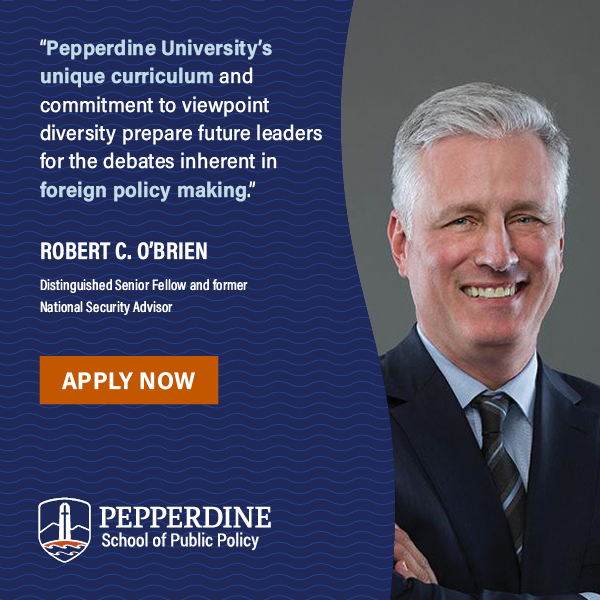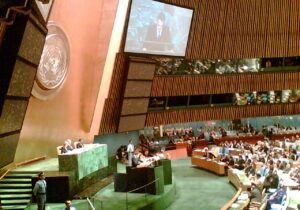In Securing the Prize: Presidential Metaphor and US Intervention in the Persian Gulf, Randall Fowler, Assistant Professor of Communication at Abilene Christian University, demonstrates the role that metaphor played both in articulating and shaping U.S. policy in the Persian Gulf over much of the last sixty years. Fowler traces the influence of an evolving set of metaphors on U.S. policy in the Gulf, beginning with a discussion of how the metaphor of a “power vacuum” shaped policy after Prime Minister Harold Wilson announced that Britain would withdraw forces based “east of Suez” by the end of 1971. He then traces the evolution of metaphors used by successive American administrations (“Twin Pillars” for Nixon, “Strategic Consensus” for Reagan, “New World Order” for the first Bush Administration, and “Dual Containment” for Clinton), culminating in George W. Bush referencing state actors, including Iran and Iraq, and terrorist organizations, like al-Qaeda, as the “axis of evil.”
Securing the Prize draws on a vast research base to describe the evolution of US foreign policy from the Nixon Administration through the second Bush Administration. The book is both grounded in the scholarly literature on American foreign policy and presidential rhetoric. It is well written in a clear style that will be accessible to non-academic readers who are interested in U.S. foreign policy in the Gulf region, and more broadly the Middle East, and also the large literature on presidential foreign policy rhetoric. It draws on this literature to explain the forces that over time drove the U.S. to be more and more involved in the Gulf, culminating in the decision of George W. Bush to invade Iraq. More than twenty years after the Bush Administration launched military attacks on Iraq and al-Qaeda, the consequences of those actions continue to influence the region and the world.
One of the core arguments of the book is that metaphors can act as powerful drivers of American foreign policy. The strongest case for this position relates to the actions of the Bush Administration in enacting the “War on Terror.” The metaphor of a war on terrorism clearly drove the administration to respond to al-Qaeda and other terrorist organizations with a strategy based primarily in military force as opposed to any other approach. While force was needed to respond to al-Qaeda in Afghanistan and elsewhere, the militarization of all aspects of the War on Terror also resulted in many civilian casualties that may have helped al-Qaeda and other terrorist groups recruit supporters. However, the way that metaphor drove the policies of the second Bush Administration is discussed only briefly in the book.
In other case studies, metaphors functioned as descriptors of American policy rather than as symbolic lenses driving action. In other words, a strategy was arrived at and then a metaphor was sought to favorably explain it to the public. Fowler describes the Nixon Administration’s use of the “Twin Pillars” imagery for referring to a policy that focused on Saudi Arabia and Iran, still led by the Shah, as sources of stability in the region. In that instance and the case of the Reagan Administration, where the policy was labeled “Strategic Consensus,” the terminology acted as a description of the policy rather than what Fowler calls “an interpretive field” driving the policy. Although Fowler does not make this point explicitly, one important conclusion that can be drawn from the book’s careful analysis is that titles for policy, metaphorical or otherwise, are unlikely to dangerously shape policy when they are used in a descriptive sense as a label for a well-developed policy initiative. In contrast, when metaphors act as interpretive fields or what the great rhetorical theorist Kenneth Burke called a “terministic screen” that projects a particular narrative onto problems, like a “war” on terror, they can lead to dangerous policy outcomes.
A second important implication that can be drawn from Fowler’s analysis is that policies supported by a coherent ideological framework are more likely to succeed at achieving objectives while avoiding negative side effects. The Reagan policy framework that Fowler describes as based in the term Strategic Consensus is a good illustration of this point. For Reagan, the Gulf region was important as a theater in the larger conflict between democracy and tyranny between the West and the Soviet Union. Whatever else may be said about him, Reagan had a well-developed ideological perspective for winning this conflict, while minimizing the risk of direct military confrontation between the Soviets (or their proxies) and the United States.
In sum, Fowler’s important book suggests two rules of thumb that can be used to assess the labels that presidents use to describe their policies. One can consider whether the label is descriptive or whether it acts as an interpretive field that in essence determines policy action. Interpretive fields are a dangerous way to make and justify policy because they often fail to adapt to changing circumstances. When your metaphor determines how you understand the world, your worldview is unlikely to adapt to changing circumstances. Second, one should consider the degree to which the label or metaphor is supported by a coherent ideological system that is based in well-supported ideological arguments about the conflict. Well supported ideological frameworks are built on strong evidence and are adaptable since if the evidence changes the framework changes as well. Reagan’s well-developed Cold War strategy was functional in large part because it adapted to changing realities. It is important to recognize that Reagan was one of the first major leaders to recognize that Gorbachev was leading the Soviet Union in entirely new directions from previous leaders. He was able to see that change because his ideological system was based in the world of facts, not metaphors.








